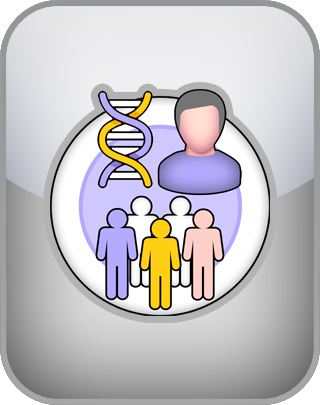Biosocial Type Test
The Biosocial Test is a comprehensive assessment tool designed to explore the intricate relationship between biology and social behavior. It delves into how genetic, environmental, and psychological factors influence individual traits and actions, offering insights into health, personality, and social interactions. By analyzing a range of biosocial dimensions, this test provides a holistic view of human development, helping individuals and professionals understand the biological roots of behavior in a social context.
To take the test, enter your input below.
Question 1 of 36
When someone proposes an activity, I usually go along with their suggestion.
| Disagree | Agree |
NEXT
The IDRLabs Millon’s Biosocial Test is developed by IDRLabs. The IDRLabs Millon’s Biosocial Test is inspired by psychometric methodology and literature by renowned psychologist Dr. Theodore Millon.
The test provides feedback such as the following:
Millon’s Biosocial Model explains personality development as the result of an interaction between biological, psychological, and social influences, centered around how individuals adapt to life's challenges through three core bipolarities. These polarities represent essential dimensions of motivational aims presented in behaviors, traits, and patterns.
The first aim, existence, focuses on fundamental survival strategies applicable to all forms of life—from particles to plants to humans. This aim is represented by the pleasure-pain polarity, where individuals are driven either to enhance life’s quality (pleasure) or to preserve life by avoiding harm (pain). The pleasure-seeking orientation motivates individuals to pursue fulfillment and enjoyment, sometimes without considering emotional or physical risks. In contrast, the pain-avoidant orientation leads individuals to withdraw from or hesitate in situations that may threaten their well-being or cause discomfort. This polarity explains behaviors that either prioritize seeking enriching experiences or focus on ensuring safety and survival by steering clear of potentially harmful environments or actions.
To sum up: The first bipolarity, Pleasure vs. Pain, reflects motivational tendencies, i.e. Motivational Focus. Pleasure-seeking individuals pursue rewards and positive experiences, while pain-avoidant individuals aim to prevent discomfort or negative outcomes.
After ensuring existence, the next priority for an organism or personality is maintenance, which requires ongoing exchanges of energy and information with its environment. This leads to the second motivating aim, adaptation, framed by the active-passive polarity. On one end, the passive orientation reflects a tendency to accommodate and adapt to the existing environment, regardless of its nature. On the other end, the active orientation represents an inclination to modify or shape the environment to better suit the organism's or personality's needs. This polarity is evident in behaviors such as "going along with the crowd" (passive), where individuals conform to external conditions, versus "getting what is deserved" (active), where they assert control and change their surroundings. Numerous variations of this polarity exist, much like the other aims.
To sum up: The second bipolarity, Active vs. Passive, describes how individuals engage with their environment or Mode of Adaptation. Active individuals take initiative, seeking to control or change their surroundings, while passive individuals react to circumstances, adapting rather than leading.
Even when organisms or personalities are well-adapted to their environments, all life forms face the limitation of time. To address this, they develop a replication aim, which involves ensuring continuity—either through producing offspring (in organisms) or investing in interpersonal relationships (in personalities). This aim is framed by a polarity that mirrors biological strategies: on one end, there is the r-strategy, focused on maximizing self-propagation, where individuals prioritize their own reproduction. This strategy is often associated with egotism, insensitivity, and a lack of social concern. On the other end is the K-strategy, which emphasizes nurturing and protecting others, such as kin or progeny. This leads to behaviors that are socially affiliative, intimate, caring, and focused on the well-being of others, ensuring long-term survival and support.
To sum up: The third polarity, Self vs. Other, refers to where individuals focus their efforts—on their own needs or on others, i.e. Focus of Need Satisfaction. Self-oriented individuals prioritize autonomy and personal achievement, while other-oriented individuals emphasize relationships and fulfilling the needs of others.
According to Millon, the balance or imbalance of these polarities determines personality traits and adaptive strategies.
The IDRLabs Millon’s Biosocial Test is inspired by psychometric methodology and research by Dr. Theodore Millon. While the IDRLabs Millon’s Biosocial Test is inspired by psychometric methodology and scientific research, it cannot be used to provide clinical assessments or an accurate evaluation of your features. Clinical assessments should always be done in cooperation with a mental health professional. For more information about any of our online tests and quizzes, please consult our Terms of Service.

